

NEW BODY Same soul
The Margrethe bowl is without a doubt the most well-known product in Rosti’s range – in Denmark and worldwide. The iconic mixing bowl made its debut in the early 1950s, and Bernadotte and Bjørn’s original design was so clean that the design has remained unchanged over the past seven decades. The same applies to the material used for the bowls.
Until now.
We would like to give a warm welcome to an updated and optimised classic. We are launching the Margrethe bowl in a new material that lives up to today’s necessary focus on recyclable materials. The new version of the Margrethe bowl is made from a recyclable plastic material, Durostima®, that features the same great qualities as the original, as well as a string of additional advantages. The bowl has got even stronger and more shatterproof, and thanks to the new material it is now also microwave- and freezer-safe.
FEATURES
We have developed a brand new plastic material specifically for Rosti. The new material (Durostima®) has all the good properties that we know from the original material, and has a number of new, additional advantages and uses.
MICROWAVE-SAFE
The bowl and lid are microwave-safe.
FREEZER-SAFE
The bowl and lid are freezer-safe.

BREAK-RESISTANT
The material is highly break-resistant.

HANDMIXER-SAFE
The material is suitable for hand mixer use.
THE NEW MATERIAL DUROSTIMA®
Of course, a world-renowned kitchen icon that has been on the market for 70 years cannot be made from just any material. Only the very best is good enough.
We would like to give a warm welcome to an updated classic. We are launching the Margrethe bowl in a newly developed plastic material, Durostima®. The material features the same great qualities as the original, as well as a string of additional advantages. The bowl has got even stronger and more shatterproof, and thanks to the new material it is now also microwave- and freezer-safe.
We’ve got there. Along the way, we tested more than 30 different materials that in one way or another did not meet our standards. We have ended up with a unique material that has been specifically developed for Rosti, meeting our requirements both now and into the future.
Rosti has exclusive rights to the new material, which is why we have named it and registered the name Durostima® – a contraction of Durable Rosti Material.
QUEEN OF MIXING BOWLS
The Margrethe bowl has been a star in the kitchen for 70 years, appearing on millions of culinary stages around the world. The bowl was designed by Sigvard Bernadotte and Acton Bjørn’s design studio in Copenhagen, and in 1954 it was named after Queen Margrethe II. The Margrethe bowl is made to last, and multiple generations know and love the Margrethe bowl for its excellent qualities and many benefits.
The original mixing bowl – the Margrethe bowl – is one of the most popular and durable kitchen products, and more than 25 million have been sold. The range includes multiple sizes and colours, as well as lids.
MUCH MORE THAN A BOWL
The Margrethe bowl is part of a large family
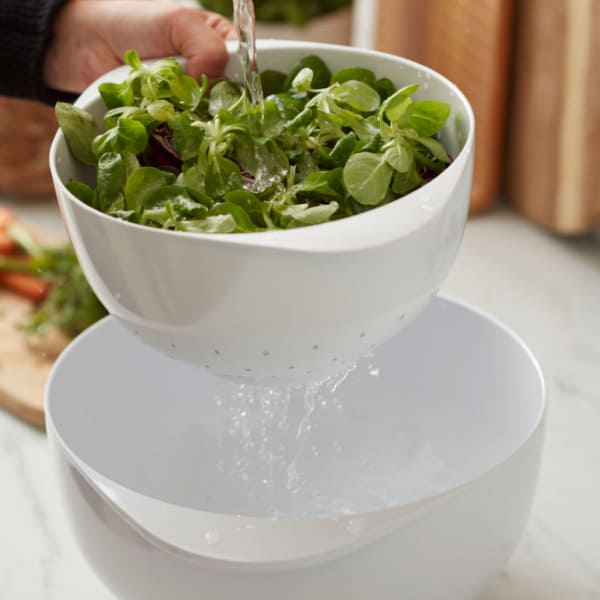
COLANDERS
The Rosti colander is perfect together with the Margrethe bowl of the same size. Choose a matching bowl or mix and match to create a dynamic colour combination. Available in a 1.5 and a 4 litre version. Dishwasher-proof, but cannot be used in microwaves and freezers. Keeps its shape, even when heated.
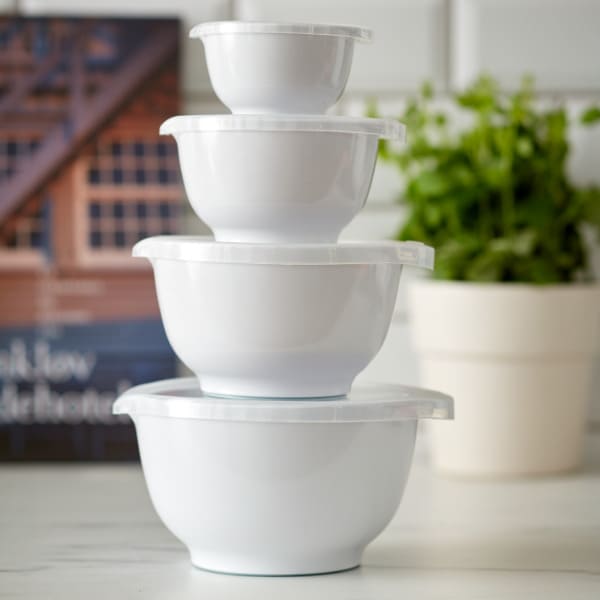
BOWL SET
We have put together a variety of different Margrethe bowl sets. With the sets you really do get it all – the most popular sizes, the loveliest colours in exclusive combinations, functionality and beauty combined.
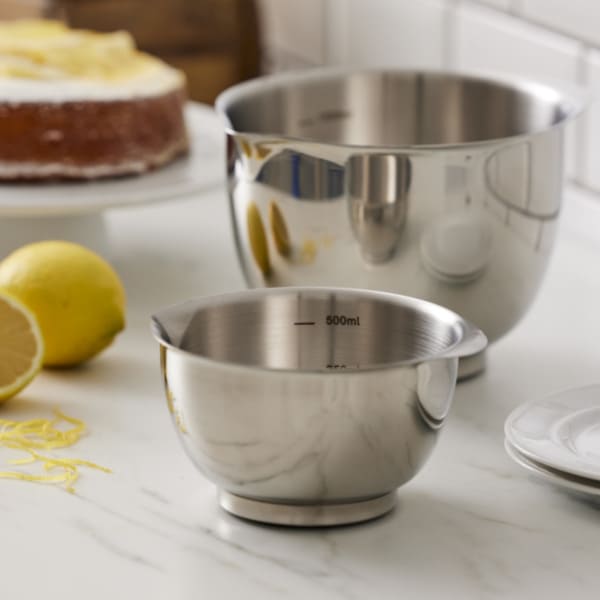
A shiny take on a classic
It has all the classic virtues of the Margrethe bowl: the excellent handle, the practical pouring spout and the non-slip base ring. But the exclusive steel bowl shines still more. The bowl features a satin finish on the interior and a glossy finish on the exterior. It is dishwasher and freezer-safe, but cannot be used in the microwave.
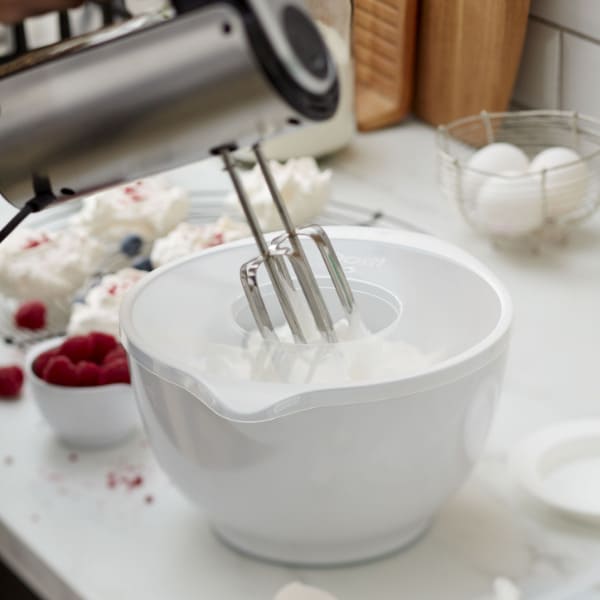
LIDS
The Rosti lid for the Margrethe bowl is available in different sizes, so there are lids for mix jugs and for all bowl sizes (except the large dough bowl and the steel bowls).

Mix & Match
Rosti’s colours have been carefully selected in line with current trends. Find inspiration for the most stylish colour blends in our wide-ranging palette. Not only are these shades stunning individually but they also harmonise beautifully when combined.
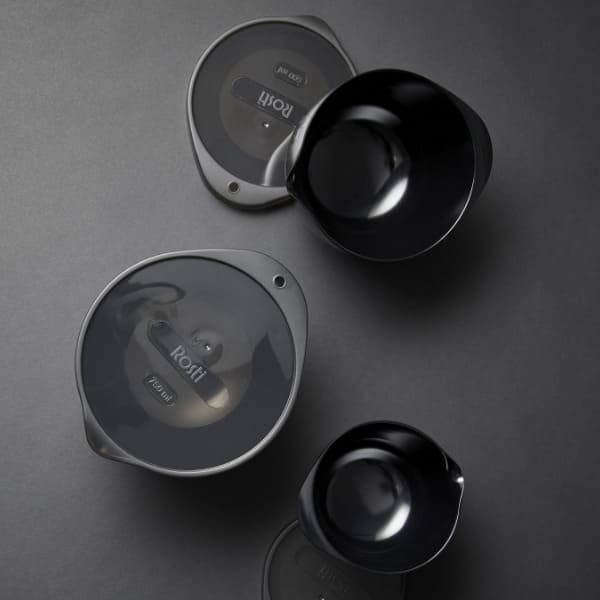
BLACK EDITION
Black is a classic, and now we are taking it to an even higher level with Black edition. Here, the Margrethe bowls have also been given a new, exclusive look with black lids.
NEW MARGRETHE
SALES FOLDER
The New Margrethe sales folder gives you a complete overview. Explore the catalogue and find inspiration and information about the stylish products in the range.
See sales folder8 sizes 10 colours
Eye-catching colours are everywhere. The modern consumer is opting for bold and vibrant shades for the home, both as primary colours and accents. Rosti’s three strong colour novelties signal personality, vitality and energy. Keep an eye out for the deep Beetroot, stunning Lavender and digitally inspired Electric blue – which of course blends in perfectly with the rest of Rosti’s colour palette, carefully composed and selected with an eye for current trends.
THE MARGRETHE BOWL
The new material Durostima® not only lives up to the quality that the Margrethe bowl is known and loved for, but also opens up many new possibilities for use in the modern kitchen by being able to be used in both freezer and microwave. We have kept the bowl’s original and unsurpassed design the same. The new bowl offers the good grip, practical spout and the non-slip ring at the base, and of course, as with all Rosti products, there is a 5 year guarantee.


from back room
to international
company
Rolf Fahrenholtz and Stig Jørgensen wanted to add a set of mixing bowls to Rosti’s range of melamine products. In 1947 Rosti purchased mixing bowl samples in all imaginable sizes, shapes and materials and asked a large number of housewives about the bowls advantages and shortcomings. The results revealed that housewives wanted a curved bowl that was spacious and yet high enough to allow whipping and stirring without the contents spilling over the sides. The bowl should also have a pouring lip and a good handle for a perfect use.
The next step was to find a designer who could reconcile these requirements with a timeless and functional design. The choice fell on Acton Bjørn and Sigvard Bernadotte’s design studio in Copenhagen, which at the time was one of the few studios in Scandinavia working with industrial design. There wasn’t a great deal of money available for the fee, so not much time was to be spent on the brief, according to the studio’s internal instructions. Fortunately the designers got it right the first time round, and with four colour suggestions for a small extra payment, the task was completed. Rosti now had a bowl that united function, quality and design.
Named after a niece
In 1950 the bowl went into production. Some years later, Sigvard Bernadotte wanted to give it a special name. Bernadotte was the son of the Swedish King Gustav VI Adolf, the brother of the Danish Queen Ingrid and thus the uncle of Princess Margrethe. In 1953 the law governing the succession to the Danish throne was changed, and suddenly 13-year-old Margrethe’s name was on everyone’s lips. Bernadotte asked the Danish court for permission to use the princess’s name for the bowl. He received permission to do so, and the next year the bowl was given its name: the Margrethe bowl.
The bowl was subsequently introduced for Christmas 1954 in three sizes, 2, 2.5 and 3 litres in white and pastel colours yellow, blue and green. The collection was expanded throughout the 1960s to include many different sizes and colours and the bowls were fitted with rubber rings at the base. Lids were also manufactured for all bowl sizes.
The Margrethe bowl has become an award-winning Danish design icon that has been depicted on stamps and which also has a place in the permanent collection of the Museum of Modern Art in New York. On a worldwide basis, more than 25 million Margrethe bowls have been sold.
